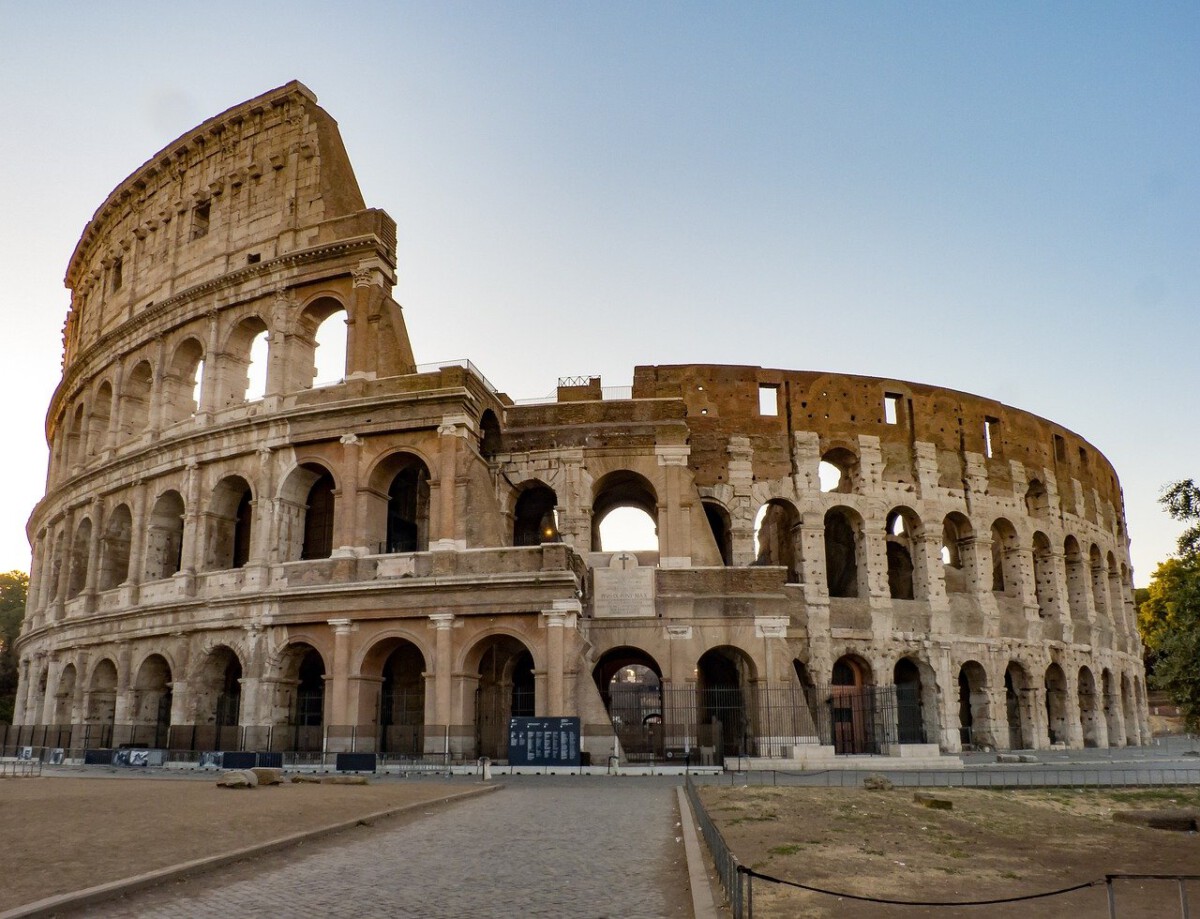The Colosseum: A Timeless Icon

The Colosseum is the heartbeat of Rome’s ancient world, drawing millions of eyes and cameras every year. Towering at nearly 50 meters, this amphitheater once echoed with the roars of 80,000 spectators, and its arches have survived earthquakes and centuries of turmoil. Recent restoration projects have made the Colosseum safer and even more photogenic, as the stonework now gleams under modern lighting. In 2023, over 7 million visitors wandered through its corridors, snapping photos of its intricate passageways and monumental facade. The Colosseum’s illuminated arches at night give photographers a chance to capture its magic in a new light, making it a focal point for travel photography. Its presence in films, art, and pop culture continues to inspire people around the world. The monument’s resilience mirrors that of Rome itself, a city that never truly sleeps. Every photo taken here is a slice of history, frozen in time.
The Roman Forum: Heart of Ancient Rome

Walking through the Roman Forum feels like stepping into a living museum, with ancient ruins telling stories that stretch back over two thousand years. Once buzzing with political debates, parades, and daily life, the Forum’s scattered columns and arches now attract crowds who want to capture its faded glory. In 2023, visitor numbers surged to 4 million, as more people sought to experience the blend of history and open-air beauty. The contrast between crumbling temples and the vibrant city beyond makes for stunning photographs that juxtapose old and new. Guided tours now use interactive technology, making it easier for photographers to understand what they’re seeing and why it matters. The Forum remains a symbol of democracy, power, and spectacle. The stones and ruins may be weathered, but they continue to inspire awe and curiosity. Every photograph taken here is a window into the soul of ancient Rome.
St. Peter’s Basilica: A Spiritual Masterpiece

St. Peter’s Basilica stands tall in Vatican City, with its immense dome dominating the skyline and providing a dramatic subject for photographers. Designed by Michelangelo and others, its architecture is both elegant and overwhelming, inviting visitors to look up in wonder. In 2023, over 5 million people came through its doors, marveling at the marble columns and breathtaking mosaics. The play of light inside, especially during sunrise and sunset, gives every photo an ethereal, almost otherworldly quality. Details like the statues lining the rooftop and Michelangelo’s Pietà keep cameras busy, as each angle offers something new. The basilica’s spiritual energy draws worshippers and tourists alike, making it more than just a building. Photographers often capture faces lost in awe, reflecting the emotional impact of the place. St. Peter’s is not just a church; it’s a living work of art and faith.
The Pantheon: Architectural Genius

The Pantheon’s massive dome and perfectly circular oculus have stood the test of time, offering a unique canvas for photographers. Built around AD 126, it remains incredibly well preserved, attracting more than 10 million visitors in 2023 alone. The way sunlight streams through the oculus creates dramatic beams that dance across the marble floor, a favorite subject for any keen eye. The Pantheon’s portico, with its imposing Corinthian columns, provides a stately foreground for photos that capture both strength and elegance. As the final resting place for famous Italians like Raphael, the Pantheon is steeped in history and reverence. Its harmonious proportions have inspired architects for centuries, making it a true marvel of engineering. Tourists and locals alike often pause in awe, snapping photos from every angle. Every image taken here is a testament to ancient Rome’s mastery of art and science.
Trevi Fountain: A Baroque Masterpiece

Trevi Fountain sparkles with energy, its cascading water and lively sculptures drawing crowds day and night. Completed in 1762, the fountain underwent a major restoration in 2023, making its marble figures shine even brighter in photos. Over 3,000 euros are tossed into its waters daily, a tradition that symbolizes hope and new beginnings. Photographers are especially drawn to the fountain at night, when its intricate carvings are bathed in soft light. The dynamic scenes of people making wishes or simply admiring the view add a human touch to every shot. The fountain’s Baroque design, with the powerful figure of Oceanus at its center, is a tribute to Roman creativity. It’s not just a fountain; it’s a place where dreams and memories collide. Each photograph captures the sense of magic and possibility that Trevi Fountain represents.
Piazza Navona: A Vibrant Gathering Place

Piazza Navona pulses with life, its oval shape echoing the Roman stadium once buried beneath. Today, the square is filled with artists, performers, and tourists, all adding color to every snapshot. The three fountains, especially Bernini’s Fountain of the Four Rivers, serve as stunning focal points for any photographer. In 2023, the square became even more popular as local artists set up temporary exhibits, inviting visitors to see Rome’s artistic pulse up close. The surrounding Baroque palaces and bustling cafes create a backdrop that is both lively and picturesque. Street vendors selling gelato and souvenirs add another layer of authenticity to photos. Piazza Navona is a place where past and present blend seamlessly. Every picture taken here tells a story of joy, creativity, and community.
Trastevere: A Charming Neighborhood

Trastevere’s narrow, winding streets offer a different side of Rome, where old-world charm meets modern vibrancy. The colorful facades of buildings, draped in ivy and laundry, create a perfect backdrop for candid street photography. In 2023, Trastevere saw a rise in visitors searching for authentic Roman experiences, making it a favorite among photographers looking for something real. The neighborhood’s bustling markets, lively piazzas, and family-run trattorias offer endless opportunities for capturing daily life. Santa Maria in Trastevere, with its golden mosaics, stands as a spiritual and visual anchor in the area. Nighttime brings out the neighborhood’s playful side, with music drifting from bars and laughter echoing through the alleys. Trastevere’s blend of tradition and youth gives every photo a sense of warmth and belonging. It’s a place where every image feels like a postcard from the heart of Rome.
The Vatican Museums: A Treasure Trove of Art

The Vatican Museums are a photographer’s dream, housing masterpieces from every era and style. In 2023, over 6 million art lovers walked the grand halls, aiming their cameras at the intricate frescoes, marble statues, and world-famous ceilings. The Sistine Chapel, with Michelangelo’s awe-inspiring Creation of Adam, is often at the top of every must-shoot list. Galleries filled with ancient relics and Renaissance wonders provide endless inspiration for both amateur and professional photographers. The museums’ layout allows light to filter in just right, highlighting the details of centuries-old art. Special exhibitions and digital guides have made it easier to understand the stories behind each masterpiece. Every corner offers a chance to capture the intersection of beauty, history, and faith. The Vatican Museums are more than a collection—they are a living showcase of human creativity.
Castel Sant’Angelo: A Historic Fortress

Castel Sant’Angelo looms over the Tiber River, its round towers and bridges making for dramatic photographs in any season. Originally built as Emperor Hadrian’s mausoleum, it later became a fortress, papal residence, and now a museum. In 2023, visitor numbers exceeded 1.5 million, many eager to climb to the rooftop for breathtaking views of Rome. The bridge leading to the castle, lined with angel statues, offers one of the city’s most iconic photo opportunities. Inside, winding staircases and ancient murals add layers of intrigue to every shot. Castel Sant’Angelo’s history of transformation mirrors Rome’s own adaptability and endurance. The fortress’s imposing silhouette at sunset is a favorite subject for landscape photographers. Every image taken here reflects the strength and mystery of the Eternal City.
The Spanish Steps: A Romantic Landmark

The Spanish Steps create a graceful link between Piazza di Spagna and the church of Trinità dei Monti, drawing crowds in every season. Built in 1725, the steps bloom with flowers each spring and bustle with life all year round. In 2023, both tourists and locals flocked here, making it one of the city’s busiest and most photographed spots. The view from the top offers sweeping vistas of Rome’s rooftops, while the steps themselves are perfect for people-watching. Artists sketch portraits, couples pose for selfies, and street performers add a touch of magic to every frame. The atmosphere is playful and romantic, making the Spanish Steps a backdrop for countless love stories. Their beauty and energy encapsulate the spirit of Rome better than words ever could. Every photo taken here is a snapshot of joy and connection.
The Baths of Caracalla: Ancient Grandeur Preserved

The Baths of Caracalla are among the best-preserved ancient spa complexes in the world, sprawling across a site that once accommodated over 1,600 bathers. Built in the 3rd century AD, these ruins now host open-air concerts and art installations, blending ancient grandeur with modern culture. Photographers are drawn to the towering walls, intricate mosaics, and the interplay of light and shadow in the vast halls. In 2024, the site introduced new digital guides that overlay historical reconstructions onto the ruins, allowing visitors to visualize the baths in their prime. The gardens surrounding the baths provide contrasting scenes of nature reclaiming history, making for unique compositions. The space’s sheer scale and atmosphere evoke the luxury and sophistication of Rome’s golden age. Every image here is a tribute to Roman innovation and their love of beauty and leisure. The Baths of Caracalla stand as a powerful reminder of just how grand Rome’s daily life once was.
The Appian Way: A Road Through Time

The Appian Way, known as the “Queen of Roads,” stretches out from the city center into the peaceful countryside, offering a different perspective on Rome’s past. Built in 312 BC, the road is lined with ancient tombs, aqueducts, and cypress trees, providing endless inspiration for landscape and travel photographers. In 2024, new bike and walking tours made the Appian Way more accessible, drawing both locals and tourists in record numbers. The tranquil setting is a sharp contrast to the city’s bustling heart, allowing for photos that capture a sense of timelessness and reflection. Every stone tells a story, from Roman soldiers to pilgrims making their way to the city. The surrounding catacombs and ruins add mystery and depth to every shot. Walking the Appian Way feels like stepping into a living painting, with every photograph preserving a piece of history. The road’s quiet beauty offers a peaceful escape and a reminder of Rome’s enduring spirit.
The Janiculum Hill: Views Across the Eternal City

Janiculum Hill isn’t as famous as some of Rome’s other landmarks, but its panoramic views are unrivaled, making it a hidden gem for photographers. The hill is dotted with monuments and statues, including the grand equestrian statue of Giuseppe Garibaldi, which adds drama to wide-angle shots. In 2024, the city installed new viewing platforms, making it easier to capture the sprawling rooftops and domes of Rome. The golden hour light bathes the city in a warm glow, perfect for sweeping landscape photos. Locals and tourists gather here to watch the sunset, often applauding as the sky turns pink and gold. The peace and quiet of the hill offer a break from the crowds below, allowing for tranquil and reflective images. The nearby botanical garden adds bursts of color and life to every frame. Janiculum’s vantage point makes every photo feel like a love letter to Rome’s eternal beauty.








